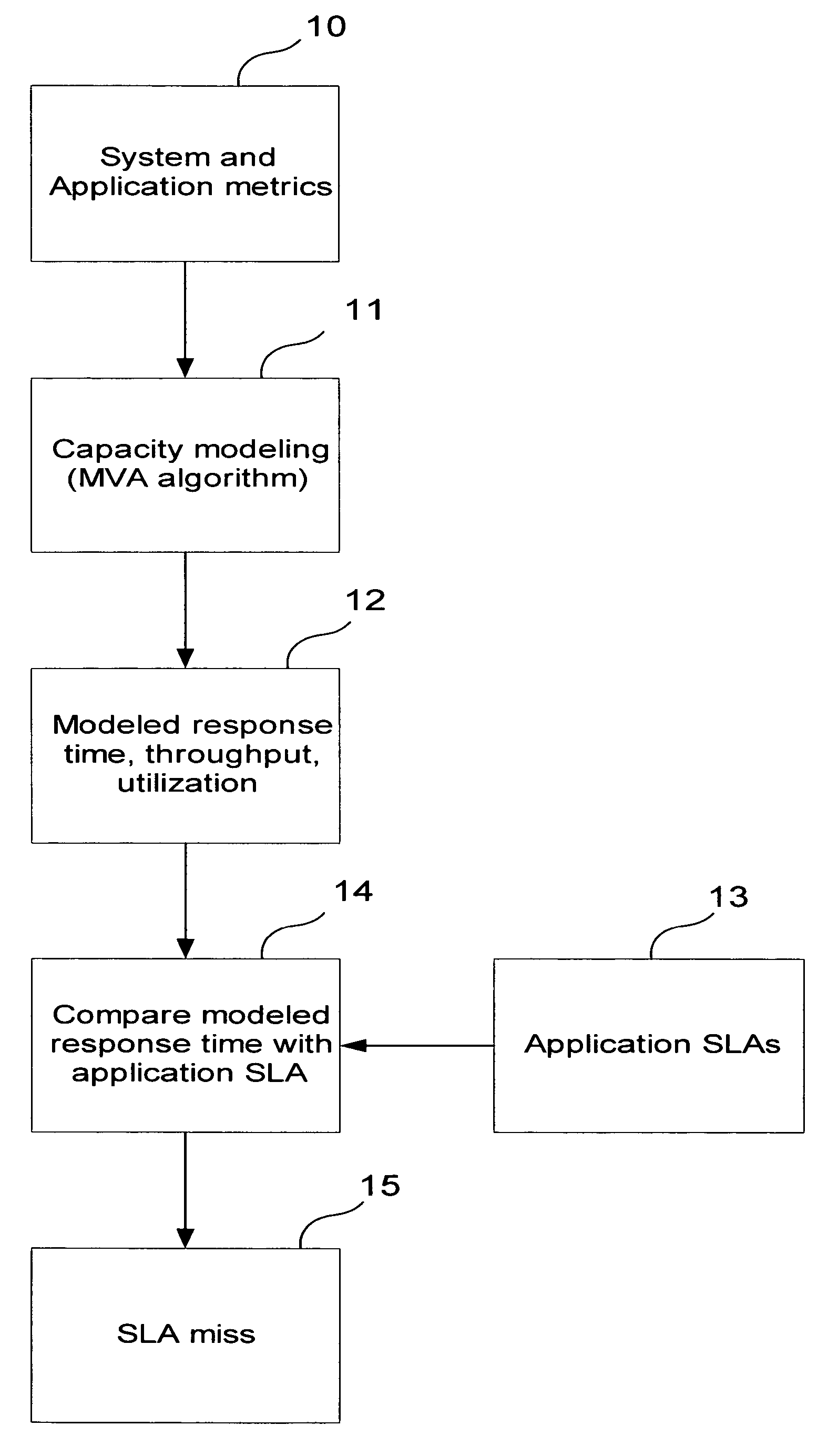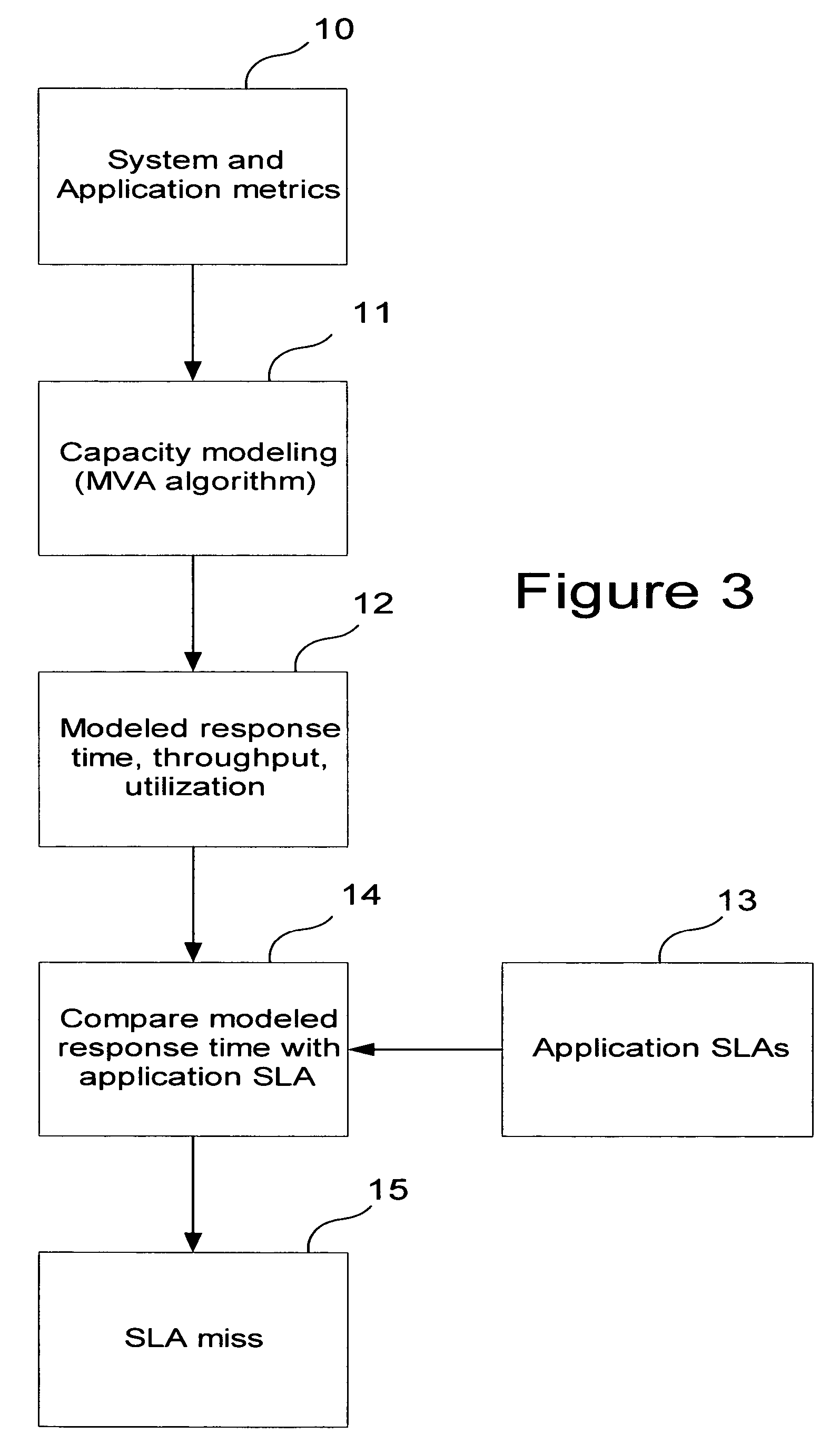Method of distributing load amongst two or more computer system resources
a computer system and load distribution technology, applied in the direction of multi-programming arrangements, program control, instruments, etc., can solve the problems of not taking into account variation, difficult to load balance using performance measures that are not normalized,
- Summary
- Abstract
- Description
- Claims
- Application Information
AI Technical Summary
Problems solved by technology
Method used
Image
Examples
Embodiment Construction
[0023]Referring to FIG. 1, a computer system 1 includes a number of servers 2, 3, 4 etc. Incoming requests are distributed among the servers by a load balancer 5.
[0024]Each server 2-4 can be modelled schematically as shown in FIG. 2, and contains a number of server resources including a CPU 6, and disks 7.
[0025]Each application received by the load balancer comprises a series of processes. Each process is executed by utilising one or more of the server resources. It is assumed that any one process will only be utilising one of the server resources at any one time. Each resource includes a queue 8 for holding processes waiting to be executed.
[0026]Associated with each application is one or more Service Level Agreements (SLAs). In most cases the application will have only a single SLA which is the same for all servers. For example the SLA for the application may be R seconds i.e. the application must take less than or equal to R seconds for execution. However in rare cases the applica...
PUM
 Login to View More
Login to View More Abstract
Description
Claims
Application Information
 Login to View More
Login to View More - R&D
- Intellectual Property
- Life Sciences
- Materials
- Tech Scout
- Unparalleled Data Quality
- Higher Quality Content
- 60% Fewer Hallucinations
Browse by: Latest US Patents, China's latest patents, Technical Efficacy Thesaurus, Application Domain, Technology Topic, Popular Technical Reports.
© 2025 PatSnap. All rights reserved.Legal|Privacy policy|Modern Slavery Act Transparency Statement|Sitemap|About US| Contact US: help@patsnap.com



